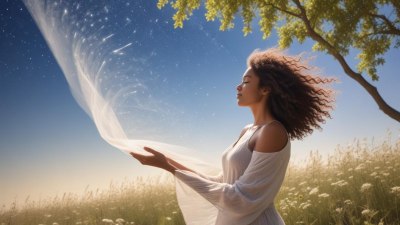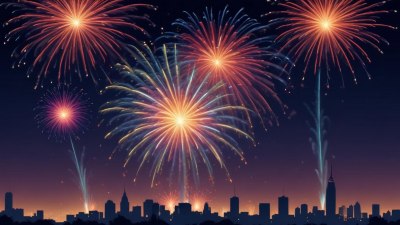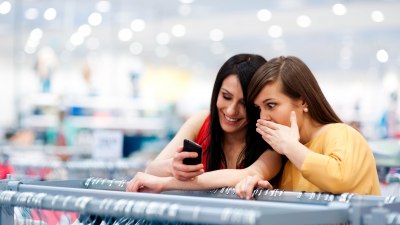The Science of Ice Crystals in Clouds
Explore the fascinating world of ice crystals in clouds and their role in weather phenomena.

This image was created with the assistance of Freepik
The formation of ice crystals in clouds is a captivating intersection of meteorology, physics, and chemistry. These seemingly simple structures are fundamental to the behavior of clouds and weather patterns. In this article, we will delve into the science behind ice crystals, how they form, their various types, and their impact on our atmosphere and weather systems.
Understanding Cloud Formation
Clouds form when moist air rises and cools, leading to the condensation of water vapor into tiny droplets. However, under certain conditions, this process can lead to the formation of ice crystals instead. The presence of ice crystals in the atmosphere is more prevalent at higher altitudes where temperatures drop below freezing. Understanding the temperature dynamics and humidity levels in the troposphere is essential to grasp how and when ice crystals form.
How Ice Crystals Form
The formation of ice crystals begins when the temperature in a cloud drops below 0 degrees Celsius (32 degrees Fahrenheit). Water vapor molecules collide and bond with ice nuclei—tiny particles such as dust or existing ice crystals—resulting in the deposition of water vapor into ice. This process is known as deposition and is crucial for the growth of ice crystals.
Types of Ice Crystals
Ice crystals can form in various shapes and sizes, influenced by temperature and humidity conditions. The six primary types of ice crystals are:
- Hexagonal Plates: Flat, plate-like structures that are the most common form of ice crystals.
- Columnar Crystals: Long, needle-like structures that grow at specific temperature and humidity conditions.
- Dendritic Crystals: Tree-like formations that exhibit intricate branching, typically occurring during high humidity conditions.
- Needles: Fine, elongated crystals that can appear during colder temperatures.
- Complex Crystal Forms: Various combinations of the above structures that can create unique patterns.
- Aggregates: Clusters of ice crystals that bond together, enhancing precipitation.
The Role of Ice Crystals in Weather
Ice crystals have a significant impact on weather phenomena. They contribute to the formation of precipitation, including snow and rain. When ice crystals grow large enough, they can overcome the air resistance and begin to fall to the ground. The temperature and atmospheric conditions determine whether these crystals will eventually become snowfall or melt into rain before reaching the surface.
Ice Crystals and Cloud Types
The presence and type of ice crystals can also help distinguish between various cloud types. For example, cirrus clouds, which are high-altitude clouds composed mainly of ice crystals, indicate fair weather, while cumulonimbus clouds contain mixed-phase particles that can lead to thunderstorms.
Measuring Ice Crystals
Scientists use several methods to study and measure ice crystals in the atmosphere. Instruments such as cloud microphysics probes and remote sensing techniques collect data on ice crystal size, shape, and concentration. This data is essential for climate models and weather forecasting.
The Environmental Impact of Ice Crystals
Ice crystals do not only play a role in weather but also have environmental implications. They influence sunlight reflection and the Earth's radiation balance. The presence of ice crystals in the atmosphere can affect climate processes and contribute to the greenhouse effect.
Understanding ice crystals in clouds is crucial for appreciating their complex role in our atmosphere. They are not just simple formations but play a significant role in our weather systems and climate regulation. Continued research into their formation and behavior will further our understanding of weather phenomena and climate change.











